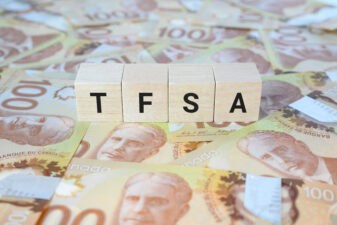In June, the CRA extended CERB eligibility by eight weeks, providing an extra $4,000 to eligible Canadians. Previously, you could receive the CERB for up to 16 weeks. Now, the maximum is 24. While the CERB is still set to wind down on October 3, the maximum number of weeks you can receive it for is longer than it was previously.
On the surface, this is good news. Canada’s unemployment rate remains high at 12.3%, despite the nearly one million jobs added in June. So, the CERB will continue to keep Canadians afloat financially, as COVID-19 runs its course. However, there’s a catch. To deal with the growing problem of CERB fraud, the CRA is making it harder to get the benefit.
Initially, CERB applications were pushed through quickly with few questions asked. This was the case for months, but now, applications are receiving more scrutiny. As a result, you may have a harder time getting approved for the CERB going forward. In fact, we’re already beginning to see cases where that’s happening.
The CRA is tightening rules
To ensure that the CERB goes to people that really need it, the CRA has tightened up its rules for screening applications. Previously, applications were processed extremely quickly. Benefits could be received in as little as three to five days.
More recently, processing times have been longer. The culprit seems to be the CRA bringing in anti-fraud screening into the process. As part of anti-fraud screening, applicants have to call an identity validation and protection service line. This is reportedly slowing down application processing, much to the chagrin of applicants.
Application processing times are getting longer
As a result of the CRA’s new anti-fraud checks, CERB and CESB applicants are reporting long delays. In a recent Global News article, one applicant reported waiting over a month to collect the CESB. At the time the article was published, he had been waiting five weeks. He also reported shifting timelines being given by CRA agents, until eventually they stopped giving timelines altogether.
Foolish takeaway
The CERB has been a necessary lifeline to Canadians in need. Through the COVID-19 era, it has provided many out-of-work Canadians just enough money to stay afloat. However, it’s beginning to look like its days are numbered. Scheduled to end on October 3, the CERB will be ending this fall if not extended again.
In light of this, it might be a good time to start looking into investments. By gradually building positions in ETFs like the iShares S&P/TSX 60 Index Fund (TSX:XIU), you can establish a passive-income stream with no expiry date. With a 3.4% yield (according to Blackrock), XIU pays $3,400 a year for every $100,000 invested.
That’s a nice income supplement, and the dividends could rise over time. You may not have $100,000 to invest right now, but building a position of that size would be very doable over a decade. And if you invest your money in diversified ETFs like XIU, you get built-in diversification, low fees, and nearly guaranteed “average” returns.







